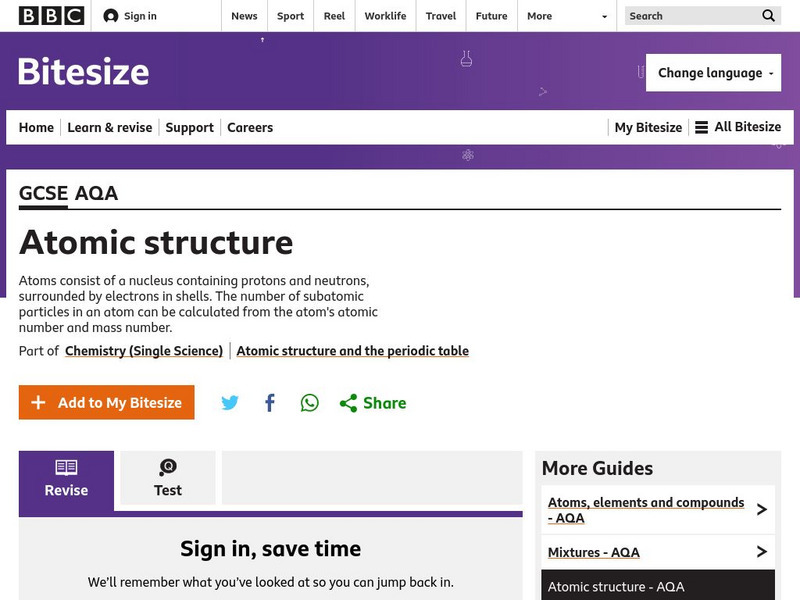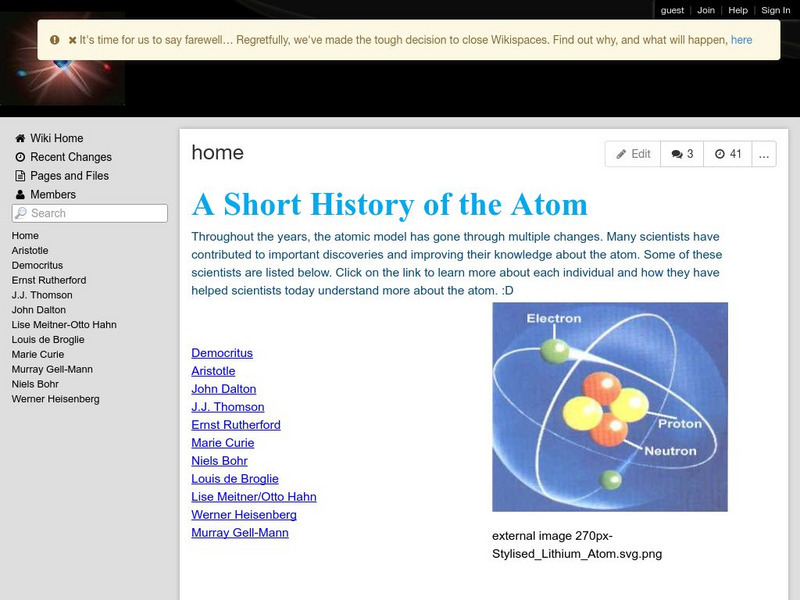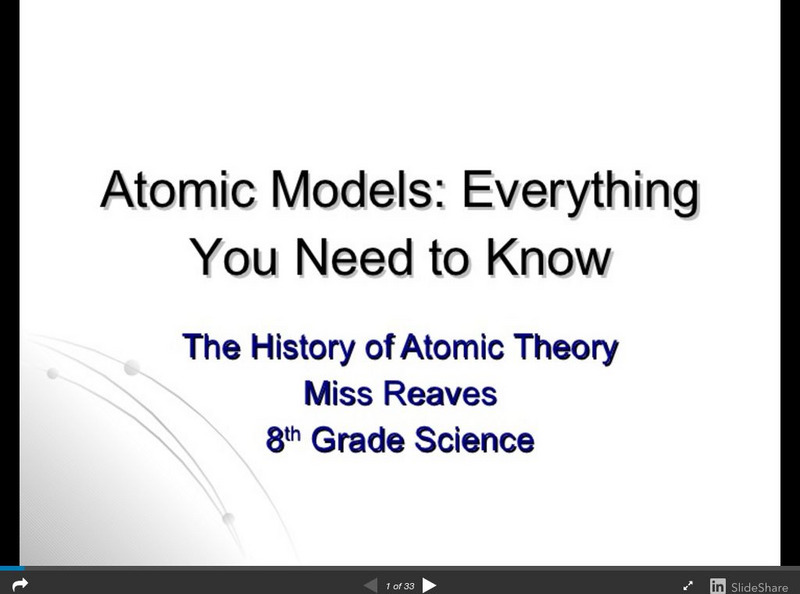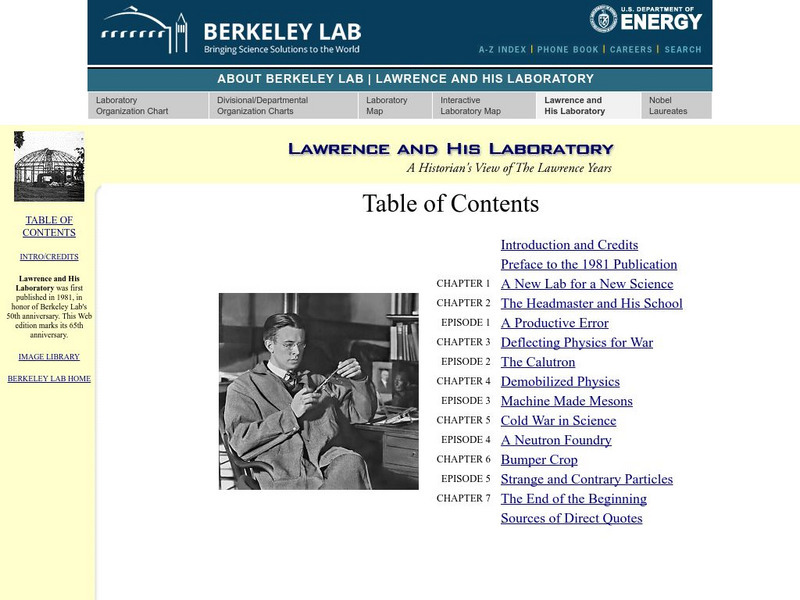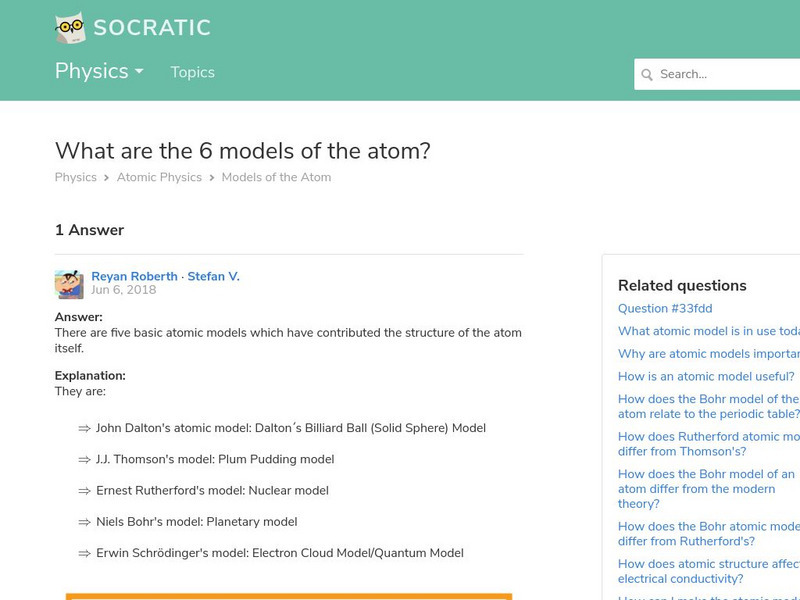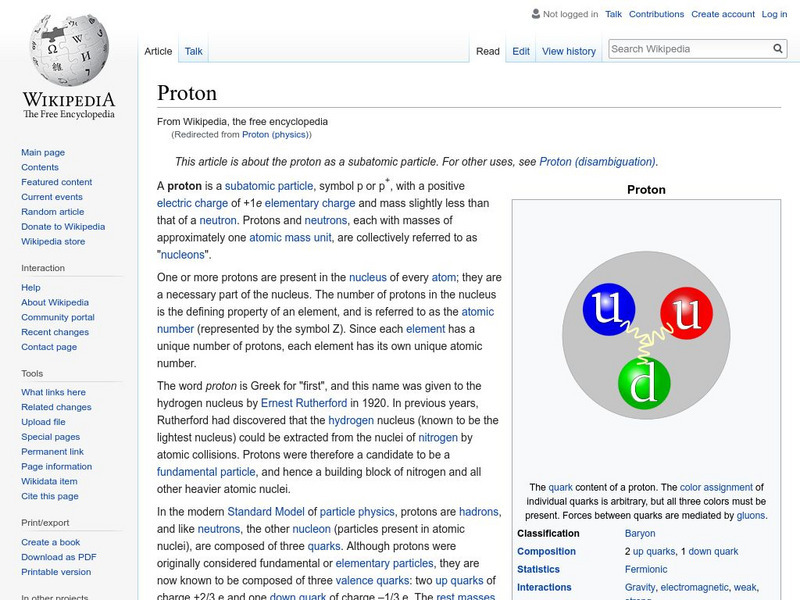Curated OER
Science Kids: Science Images: Ernest Rutherford
This is a black and white image of Nobel Prize winning chemist, Ernest Rutherford. Check out our Ernest Rutherford facts page for more information on this famous scientist.
Curated OER
Smithsonian Libraries: Scientific Identity: Ernest Rutherford (1871 1937)
A portrait of Ernest Rutherford from the Dibner Library of the History of Science and Technology, made available through the Smithsonian Institution's Scientific Identity Collection.
BBC
Bbc: Gcse Bitesize: Atomic Structure
This lesson focuses on early ideas about the structure of an atom including John Dalton's plum pudding model and Ernest Rutherford's nuclear model. A link to a test is provided.
Concord Consortium
Concord Consortium: What Are Nature's Building Blocks?
Activity 3 of this module investigates: How do we know what's inside an atom? From Ernest Rutherford's Gold Foil Experiment to his investigation of the Plum Pudding model, students become aware of the Nuclear Model of an Atom. Also in...
Other
A Short History of the Atom
A classroom wiki where students present profiles of scientists who developed models of the atom or who contributed to the understanding of atomic theory. Covers Democritus, Aristotle, John Dalton, J.J. Thomson, Ernest Rutherford, Marie...
Tom Richey
Slide Share: Atomic Models: Everything You Need to Know
A detailed slideshow for Grade 8 students that looks at the history of our understanding of atoms. Looks at the ideas presented by Democritus, John Dalton, J.J. Thomson, Ernest Rutherford, and Niels Bohr, and the modern-day wave model. A...
National Health Museum
Radioactivity: Historical Figures
A summary of the contributions of Wilhelm Roentgen, Antione Henri Becquerel, Marie Curie, and Ernest Rutherford on radioactivity.
Other
Le Moyne College:elements & Atoms, Indivisible No Longer
Click to read different historical documents in chemistry related to the history of the study and discovery of radioactivity.
Lawrence Berkeley National Laboratory
Berkeley Lab: Lawrence and His Laboratory
This website gives a complete description of the Lawrence Berkeley Laboratory's early years. The development of Lawrence's first and subsequent cyclotrons are chronicled.
Lawrence Berkeley National Laboratory
Berkeley Lab: The Atom
Presented is an overview of atomic theory concentrating on the experiments of Ernest Rutherford.
Other
Chemtopics: Development of Modern Atomic Theory [Pdf]
A summary of the achievements of J. J. Thomson, Ernest Rutherford, Niels Bohr, and Erwin Schrodinger.
Other
A World of Particles: The Neutron
A World of Particles offers a history of the discovery of the neutron, an exclusive particle in an atom.
Other
Socratic: What Are the 6 Models of the Atom?
Brief explanation of six major models of the atom along with illustrations. Covers the Greek model (Democritus), John Dalton, J.J. Thomson, Ernest Rutherford, Niels Bohr, and the modern electron cloud or quantum mechanics model.
Other
Holonity: The Atom From Solid Balls to Sparkling Ghosts
Presents the history of the atom with a New Age perspective on some aspects. It describes the concept of the atom in Vedic philosophy and that developed by Democritus. Goes on to look at the models proposed by John Dalton, J.J. Thomson,...
Other
Slide Player: History of the Atomic Model
Short slideshow looking at the history of models of the atom, including the contributions of Aristotle, Democritus, John Dalton, J.J. Thomson, Ernest Rutherford, and Niels Bohr.
Science Struck
Science Struck: The Structure of an Atom: A Labeled Diagram
Looks at the scientists who developed the model of the atom by building on previous scientists' discoveries about its structure.
Science Struck
Science Struck: Plum Pudding Model
Describes J.J. Thomson's theory of atomic structure, called the 'Plum Pudding Model,' and how it was disproved by Ernest Rutherford.
Wikimedia
Wikipedia: Proton
Wikipedia offers information on the proton, a subatomic particle with a positive electric charge. Many hyperlinked terms.
National High Magnetic Field Laboratory
Magnet Academy: Geiger Counter 1908
Counting alpha particles was tedious and time-consuming work, until Hans Geiger came up with a device that did the job automatically.
National High Magnetic Field Laboratory
Magnet Academy: Timeline of Electricity and Magnetism: 1890 1899
Scientists discover and probe x-rays and radioactivity, while inventors compete to build the first radio.
National High Magnetic Field Laboratory
Magnet Academy: Timeline of Electricity and Magnetism: 1910 1929
Scientists' understanding of the structure of the atom and of its component particles grows, the phone and radio become common, and the modern television is born.
CK-12 Foundation
Ck 12: Chemistry: Neutrons
[Free Registration/Login may be required to access all resource tools.] Explores the discovery and properties of the neutron and the process of nuclear fission.

